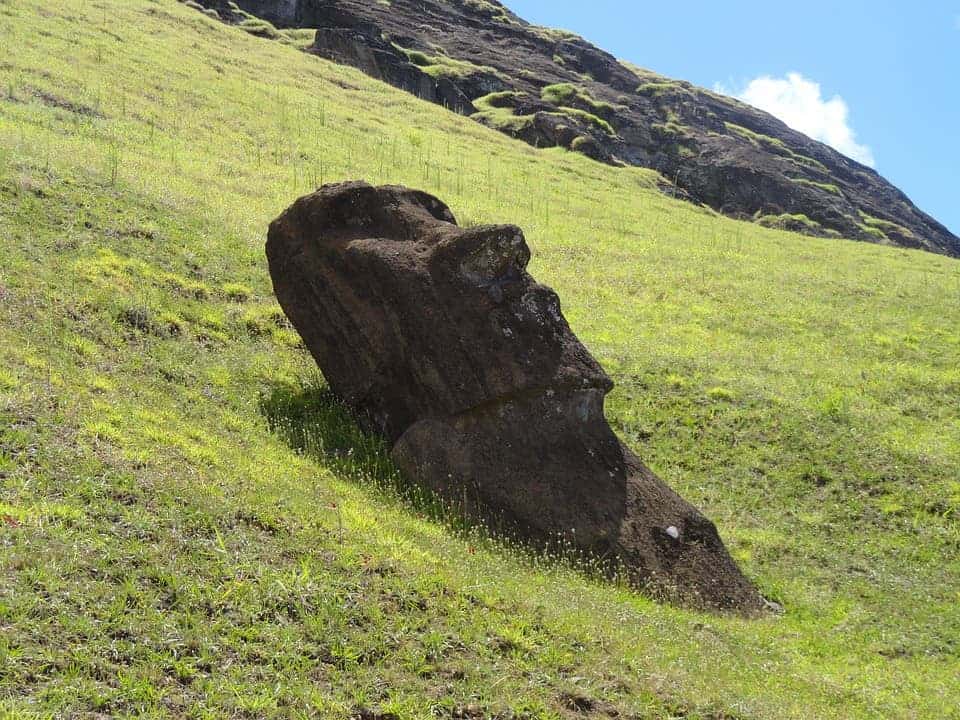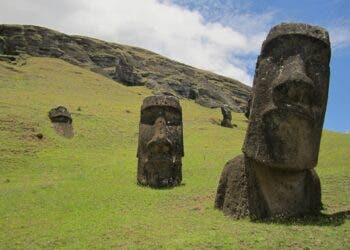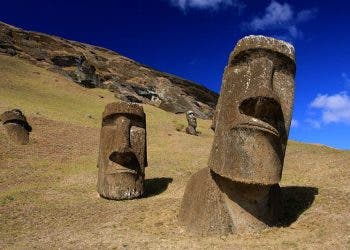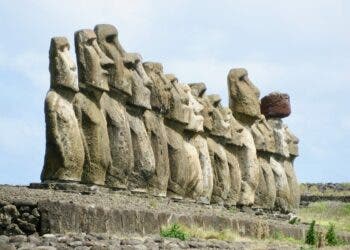A new study suggests that the mysterious moai statues on Easter Island were placed to mark sources of fresh water.

A Polynesian population called the Rapa Nui arrived on Easter Island in 1200 AD. Despite the unpredictable weather and nutrient-poor soil, they established a thriving and industrious culture, leaving behind many impressive artifacts. Most famous among these artifacts are the giant moai: giant basaltic statues scattered across the island.
Although they are still shrouded in mystery, several explanations have been proposed. The most straightforward one is that the moai represent the inhabitants’ gods or ancestors, watching over them. But a new study has a new idea: the statues are marking valuable sources of freshwater.
As if Easter Island wasn’t inhospitable enough, there’s another problem: freshwater. Easter Island is a volcanic high island, consisting mainly of three extinct coalesced volcanoes. While there are freshwater lakes inside the volcano craters, there are no streams or other sources of surface freshwater. This must have been quite a worry for the Rapa Nui people, and the megaliths may have been built in to indicate freshwater, researchers suggest. The relationship isn’t straightforward, however: it’s not that all moai are indicators of freshwater, but everywhere there is some subsurface water source, there’s always moai nearby.
“Our results suggest that ahu locations are most parsimoniously explained by distance from freshwater sources, in particular coastal seeps, with important implications for community formation and inter-community competition in precontact times,” researchers write.
The team analyzed the connection between the moai (and the platforms they were placed on, called ahu) and rock mulch agricultural gardens, marine resources, and freshwater sources — the three most important resources for the Rapa Nui civilization. They didn’t find any connection to the first two, but the third one provided a good fit. The fresh water would pass through the ground into aquifers, seeping into caves as well as emerging around the coast. Controlling these places would have been quite valuable to the natives.
This may mean that, at least in part, the statues were built to indicate territorial domination over a sparse resource.
“What is important about it is that it demonstrates the statue locations themselves are not a weird ritual place — represent ritual in a sense of there is symbolic meaning to them, but they are integrated into the lives of the community,” said Prof Carl Lipo from Binghamton University in New York, who was co-author of the research.
However, not everyone is convinced by this theory. Jo Anne Val Tilburg, an Easter Island expert from the University of California, Los Angeles believes that these freshwater seeps would have been minor resources, so it is highly unlikely that the moai were built in relation to them.
Whatever the case may be, the enigma of the moai and their creators will undoubtedly continue to puzzle us and stir debates for many years to come
The study has been published in PLoS.






